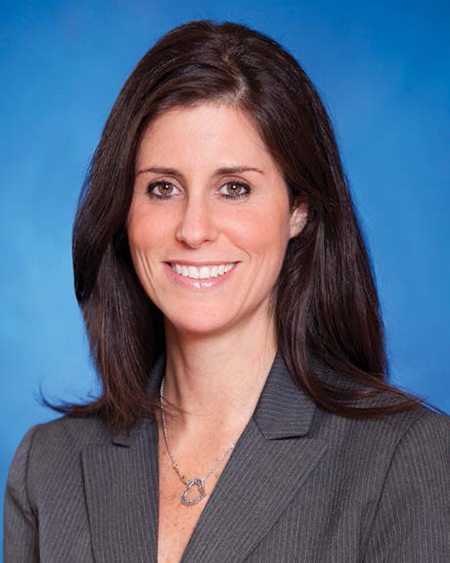Auction Underwhelms
WASHINGTON—The $80 billion windfall predicted from the TV spectrum incentive auction failed to materialize eight months in. While broadcasters heeded the forecast and priced 126 MHz of TV spectrum at $86 billion in the first stage of the auction, wireless providers topped out at $23.1 billion for the 100 MHz offered for sale.

Demand in subsequent stages remained tepid, despite claims to the contrary in the months preceding the auction, when spectrum fever reached an apex with the prognostication of $80 billion in revenue.
“Perhaps the notion of a ‘spectrum crisis’ peddled in Washington for the last seven years is not as acute as policymakers were led to believe,” said Dennis Wharton, executive vice president of Communications for the National Association of Broadcasters, after the first stage of the auction concluded in late August.
FIRST OF ITS KIND
The incentive auction, which commenced March 29, is the first of its kind, with a two-step process where broadcasters name their price in a reverse auction and wireless providers bid in a forward auction.
The process is carried out on a software platform that shuffles stations into channel assignments between reverse auction rounds as the prices fall in 5 percent decrements. At zero, the reverse auction concludes, clearing costs are posted and forward auction bidding is scheduled. If bids fail to cover clearing costs and demand equals supply in the 40 top wireless licensing areas, the process starts again at a lower clearing target.
A second stage that started Sept. 13 brought the clearing target down to 114 MHz, which broadcasters priced at $54.6 billion in October. Wireless bidders came back a few days later at $21.5 billion for the 90 MHz offered, after a single, two-hour round of bidding.
By early Dec. 1, broadcasters priced a third-stage 108 MHz clearing target at $40.3 billion, while forward-auction bidding on Dec. 5 topped out at $19.7 billion for 80 MHz, also after a single, two-hour round.
The professional video industry's #1 source for news, trends and product and tech information. Sign up below.
Dan Hays, principal of PwC’s Strategy& said stage three results indicated wireless providers’ priorities have changed.
“The relatively quick completion of the third stage of the forward auction comes as no surprise given pre-auction indications from potential purchasers and the current state of the mobile industry in the United States,” he said. “Despite strong commitments to date from buyers in the forward auction, top-line proceeds may struggle to make it north of $20 billion as operators’ capital spending priorities have seemingly shifted away from spectrum at this time.”
At press time, the auction was set to proceed to a fourth stage with the reverse auction starting Dec. 13. Depending on continued broadcaster participation, the clearing target would fall to 84 MHz. (This article first appeared in the December issue of TV Technology magazine.)
AUCTION COULD CLOSE SOON
Clearing targets are based on 6 MHz increments— the bandwidth of a TV channel— but the spectrum is being sold to wireless providers in paired, 5 MHz blocks, with a portion designated to interference buffer zones. Consequently, buyers are bidding on less spectrum than broadcasters are selling.
This gap narrows significantly at 84 MHz because broadcast and wireless spectrum would be divided by a channel now occupied by radio astronomy. This would leave more channels for the post-auction TV station repack, meaning the FCC would have to provisionally “buy” fewer stations. E.g., 126 MHz left just nine TV channels in each market; 114 MHz left 11; 108 MHz leaves 12; and 84 MHz leaves 16 TV.

Marci Ryvicker Hays noted that at 84 MHz, “a significant reduction in the cost to clear broadcasters is likely, bringing the auction to a close after the start of the new year.”
Like Hays, Wells Fargo Senior Analyst Marci Ryvicker predicted a fourth stage before forward auction bidding concluded in the third.
“We still think this new $40 billion ‘ask’ is way too high for the incentive auction to conclude in Stage 3,” she wrote in an analyst note. “This should not be a surprise as we have been saying for a long time that the auction will take multiple stages—at least four—and that the most likely outcome is somewhere in the $25 billion to $35 billion range. We are thinking more on the low end at this point.”
That $25 billion target is half-a-million shy of a 2011 Congressional Budget Office projection for median net auction proceeds at 84 MHz, after broadcasters are compensated. The Middle Class Tax Relief and Job Creation Act of 2012, which authorized the auction, pegged proceeds at $28 billion, with $15 billion of that going toward a $30 billion extension of unemployment benefits.
Over time, these projections grew, particularly as broadcasters pushed back and speculators joined forces in the “Expanding Opportunities for Broadcasters Coalition,” led by former Disney lobbyist Preston Padden.
By October of 2014, the FCC released a report from New York investment bank Greenhill & Co., which cited “independent studies” that projected proceeds of $45 billion for 126 MHz. A footnote in the report revealed that the independent study comprised a June 13, 2014, ex parte filing describing a meeting among FCC staff and EOBC representatives, in which the $45 billion was extrapolated directly from a pledge by AT&T to buy 20 MHz for $9 billion.
In February of 2015, a month after 65 MHz of 1.7–2.1 GHz advanced wireless spectrum brought nearly $45 billion in the AWS-3 auction, the commission issued a revised Greenhill report that valued just the top stations in each of the 210 TV markets at $39 billion. The EOBC followed with a Kagan estimate predicting overall auction proceeds of up to $80 billion, while J.P. Morgan’s Alexia Quadrani stayed in the $25 billion to $35 billion range given the impact of AWS-3 on bidder cash reserves. The two biggest bidders in AWS-3, AT&T and Verizon, together spent $28.5 billion. In 2008, the two providers spent $16.3 billion in the 700 MHz auction of TV Channels 52–69, which raised $19.1 billion for 108 MHz in 261 bidding rounds over 38 days.
When third-stage bidding ended after one round in December, Padden called the auction “a joke.”
“This is not an auction. It is a joke and an abuse of the broadcasters, the FCC and the public who will be put through a disruptive repacking process that increasingly looks unjustified. The question is why the carriers lobbied so hard for a statute to authorize an auction of spectrum they don’t want. The carriers now have twice walked away from blocks of spectrum they told Congress was ‘vital’ and for which they predicted bidding as high as [$48 billion],” Padden said in an email, citing a Feb. 15, 2011 white paper.
See more TV Technology coverage at our spectrum auction silo.
Articles, documents referenced:
FCC Unveils Opening Prices in Forward Auction
Oct. 14, 2016—For example in top market New York, the closing clock price per spectrum block at the end of stage one of the forward auction was $477,249,780. The opening clock price in stage two increases 5% to $501,113,000. ~ B&C
Historic Incentive Auction Begins
March 28, 2016— The FCC’s auction system will determine a spectrum-clearing target between 42 and 144 MHz based on how many and which stations participate. ~ TV Technology
J.P. Morgan: FCC's 600 MHz incentive auction likely to fetch only $25B to $35B
Feb. 11, 2016— “Finally, and perhaps most importantly, we expect lower demand in this auction, as carrier balance sheets are stretched by the last auction and recent acquisitions—we don't expect Dish to be a substantial bidder, and private equity demand will be lower due to restrictions on Designed Entity bidding and the long time to usability.” ~Fierce Wireless
Sprint Bids Incentive Auction Adieu
Sept. 28, 2015— Sprint is sitting out the upcoming TV incentive spectrum auction. Marcelo Claure, CEO of the nation’s No. 4 carrier made the announcement on Saturday… Sprint also sat out last year’s AWS-3 auction, which raised around $45 billion and ignited new interest in the TV spectrum incentive auction. ~ TV Technology
Bidding and Prices in the AWS-3 Auction
May, 2015— The AWS-3 auction was a highly successful auction for taxpayers as it raised over $41 billion and freed up 65 MHz of spectrum…. In the 600 MHz auction, the setting will be similar with the exception that competitive carriers, especially those with little low-band spectrum, will be much more eager to acquire the low-band spectrum and AT&T and Verizon will be much more eager to foreclose this possibility. ~ Peter Cramton, Professor of Economics at the University of Maryland.
CBO Puts Broadcaster Auction Cut at 25-75 Percent
April 21, 2015—The CBO also hasn’t moved far from its original estimate for how much the auction is likely to net for the fed, from $24.5 billion in 2011 to a median of $25 billion now, according to correspondence between the CBO and a lawmaker. ~ TV Technology
Expanding Opportunities for Broadcasters Coalition Filing
Feb. 19, 2015— Even the more conservative Kagan estimate predicts Incentive Auction revenues to reach between $60 billion and $80 billion.~ EOBC FCC Filing
Kagan: Wireless Should Be Ready, Able for 2016 Auction
Feb. 18, 2015— The Big Four wireless carriers —Verizon, AT&T, T-Mobile and Sprint— and "very possibly" others, will be "fully engaged and sufficiently capitalized bidders" in a 2016 broadcast incentive auction that could raise as much as $80 billion from those wireless carriers. That is the major takeaway from a just-released Kagan study commissioned by the Expanding Opportunities for Broadcasters Coalition, which is definitely hoping that is the case. ~ B&C
FCC Proposes Top Station Opening Bids Totaling $39 Billion
Feb. 9, 2015—We took $38 billion and sliced that up per the interference formula, [the number of people covered by signal, and the number of signals with which it overlaps.] The major differences is the first Greenhill figures were estimated high-end payouts. It was a top-down approach. This is maximum opening bids designed to reflect robust auction participation. ~ TV Technology
FCC Aims to Clear 84 MHz of TV Spectrum
Dec. 11, 2014—Regulators today approved proposed proposals to clear 84 MHz of TV spectrum, establish opening bid prices and develop procedures to close the 2016 incentive auction. I.e., they suggested rules to recommend for final adoption in a Public Notice approved in a 3-2 party-line vote. ~ TV Technology
$45 Billion Auction Projection Rests on AT&T’s DirecTV Acquisition Pledge”
Oct. 2, 2014—The $45 billion being proffered as potential incentive auction proceeds was derived from AT&T’s commitment to spend $9 billion on 20 MHz of TV spectrum if its bid to buy DirecTV goes through. ~ TV Technology
Obama Signs Spectrum Auction Authority Bill
Feb. 23, 2012—The government expects to end up with around $15 billion from TV spectrum auctions after the set-asides. The sum is already calculated into offsetting $30 billion to extend unemployment benefits, also covered in the bill. ~ TV Technology
“Reclaimed TV Spectrum Valued at $28 Billion in Obama Jobs Bill”
Sept. 12, 2011—President Obama’s proposed jobs bill assumes that incentive TV spectrum auctions will bring around $28 billion in proceeds. ~ TV Technology
